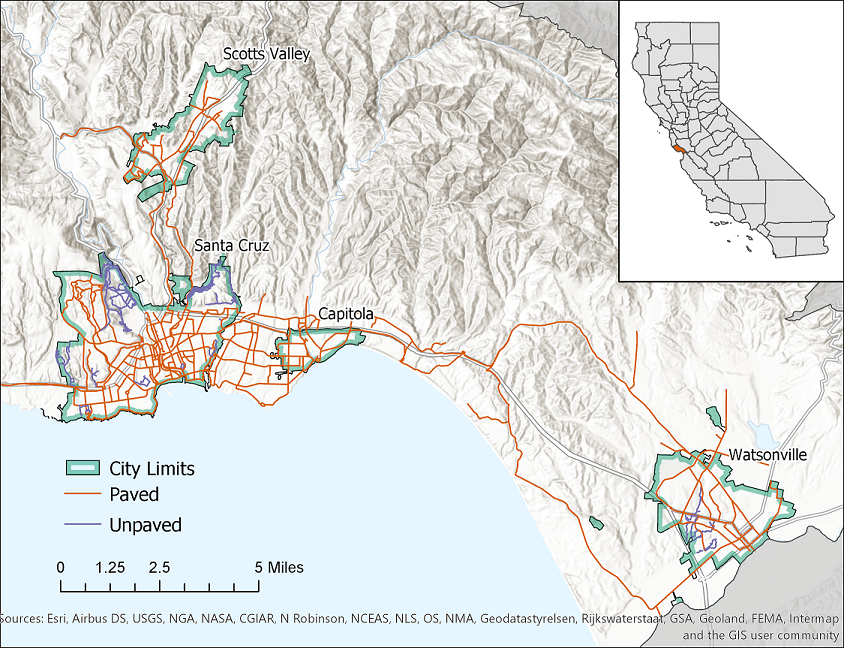Queer Gender & Bicycling in Santa Cruz, CA

Abstract
Researchers in the geographic subfield of gender & mobility have considered the way gender and mobility shape each other within the lived experiences of women bicycle riders. The literature has neglected to explicitly consider the lived experiences of queer bicycle riders. To fill this gap, this thesis presents a qualitative case study examining the relationship between gender and mobility in the lived experiences of queer bicycle riders in Santa Cruz County, California.
This study collects data from adult queer bicycle riders who resided in Santa Cruz County using both an online survey and a semi-structured interview. The survey data was used to contextualize the beliefs and experiences of participants and discourse analysis was used to understand the themes present in our interview transcripts. This process resulted in an understanding of the participant’s experiences occurring at two scales. First, at the scale of the body through queer and intersectional subjectivities and, second, at the local scale of infrastructure, both urban and rural.
The study theorizes a radical queer conception of ‘cyclist-subjectivity,’ by using a queer lens to understand the ‘cyclist’ as a normative mobile subject contrasted with the more general ‘bicycle rider.’ Cyclist-subjectivity is enacted through norms of gender, sexuality, race, and class; and through the bicycle community and its community spaces. The study analyzes bicycle space—the cyclescape—through a queer approach to space drawn from queer geography, considering the experiences of queerly-gendered mobile subjects at the infrastructural scale, as they move through Santa Cruz County. This presents the cyclescape as a site of normative gendered processes.
This study reframes thinking about the gender dynamics at play in bicycle communities, particularly regarding non-normative forms of gender outside of the cisgender heterosexual norm. Through centering non-normative queer voices, this study makes clear the subjects who are excluded from these communities. This clarity can then provide the basis for radical interventions into cycling to develop queer, or queer-inclusive, cycling communities. The study also provides an example of the way normativities operate within mobility spaces like the cyclescape, which can serve as a basis to evaluate the operation of normativities within mobility more broadly. In this sense, one can employ a queer geographic lens to further a larger goal of more just mobilities.